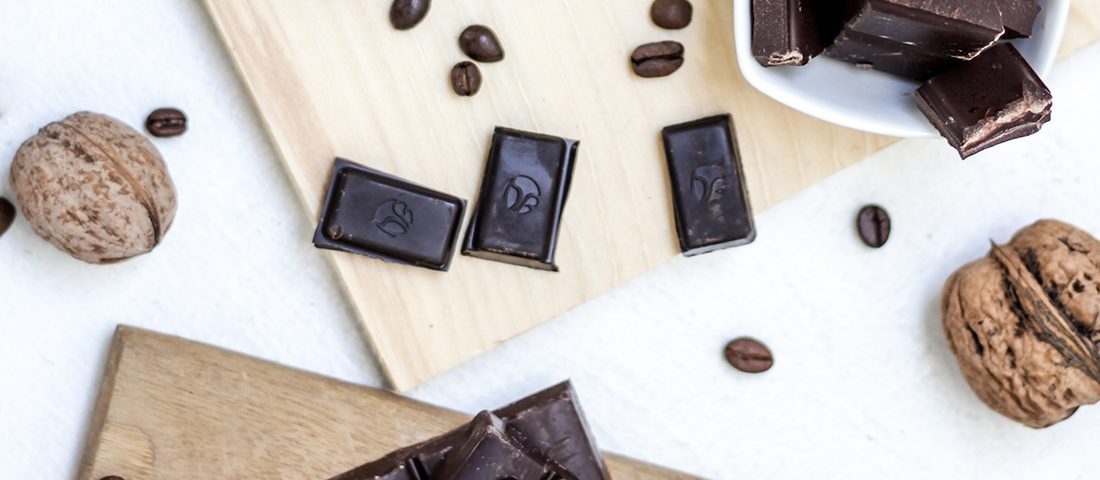
Finding the Right Yoga Style For You
October 3, 2019
Why Sitting Too Much Is Bad For Your Health
November 7, 2019Five Foods High in Magnesium

Magnesium Foods
Magnesium is one of the most abundant minerals residing in our bones and soft tissue. It is required in more than 300 biochemical reactions in the human body. Dr Mark Hyman describes this mineral as “The most powerful relaxation mineral available”. He goes on to say that an average modern diet is deficient in magnesium. As adults, we require more than 400mg per day in order for the aforementioned biochemical reactions to happen.
Whilst magnesium deficiency is rare, you should keep an eye on your magnesium intake. Do this just by adding some magnesium-rich foods into your diet. Here are our top 5 sources.
1. Cacao (or Cocoa)
Cacao was originally discovered and consumed in Central and South America. It has been traditionally used by the Mayan’s as a drink, a medicinal remedy for a variety of ailments and as part of burial ceremonies.
The beans are high in antioxidants and minerals, and while cacao is a key ingredient in milk chocolate, the cell-degenerating effects of high sugar levels can actually deplete your magnesium stores, causing deficiencies.
The best alternative is keeping as true to the source as possible. Cacao powder can be used as a great morning coffee substitute – make a raw cacao hot chocolate. Be mindful that cacao does contain caffeine and it’s best to consume it a minimum of four hours away from sleep time – depending on your caffeine tolerance.
2. Kelp
Edible seaweed may be one of the most overlooked sources of essential nutrients. This sea vegetable is a highly sustainable source of antioxidants and contains abundant levels of nutrients.
There are many ways to consume kelp (all seaweeds for that matter) however, kelp noodles are similar to vermicelli noodles and taste delicious when cooked in organic chicken stock.
Sea vegetables are a great way to maximise your nutrient intake, but before sourcing your own naturally, ensure they are certified edible.
3. Figs
This plump, purple relative of the mulberry is brimming with benefits above and beyond its high levels of magnesium – like good levels of calcium, potassium and B6 too.
Both fresh and dried figs are delicious additions to your diet. They can be added to bircher muesli for breakfast or maximise the nutrient profile of a snack by replacing sultanas or dates. Another delicious way to add fresh figs to your diet is a Mediterranean inspired fig and prosciutto salad.
A huge benefit of consuming this whole food fruit is that, alongside magnesium, you are also getting sufficient amounts of fibres which support healthy digestion and blood sugar
4. Blackstrap molasses
Blackstrap molasses is a syrup that is the nutritious byproduct of creating white sugar from sugarcane and is often discarded or fed to animals.
However, this black and slightly bitter food is teeming with minerals, including (but not limited to) magnesium. Blackstrap Molasses can be sourced from most health foods stores and should be consumed in modest amounts. It can be used to enhance raw sweet treats, so instead of using just honey, maple or rice malt syrup to sweeten them, try adding a touch of blackstrap molasses.
5. Buckwheat
Despite having wheat in the name, this food is not a grain but rather a versatile seed that is rich in magnesium. Buckwheat flour makes delicious traditional thin crepes and also provides an array of beneficial amino acids (proteins).
The over-consumption of grains can be easily balanced out by adding this into your food in place of glutinous flours. Buckwheat groats (the whole seed) are a delicious ingredient in homemade gluten-free bircher muesli. It is important to soak nuts and seeds before consumption, ‘activating’ them to help unlock the nutrients contained within and to help your body with absorption.
BONUS MAGNESIUM SOURCE: Sparkling Mineral Water
Did you know that naturally-sourced sparkling mineral water is typically a great source of magnesium?!
Water from the tap, in most homes, contains fewer minerals than water sourced naturally from springs. The key here is understanding the difference between soda water and sparkling mineral water. While they’re both fizzy water, one is high in minerals (sparkling), the other is simply water that is carbonated with gas. Ensure you read the labels properly and look for Magnesium in the ingredients list.
Resources:
https://www.ncbi.nlm.nih.gov/pubmed/29878243
http://www.todaysdietitian.com/pdf/courses/HultinSeaVeggies.pdf
https://foodfacts.mercola.com/figs.html
https://www.ncbi.nlm.nih.gov/pubmed/26390136



